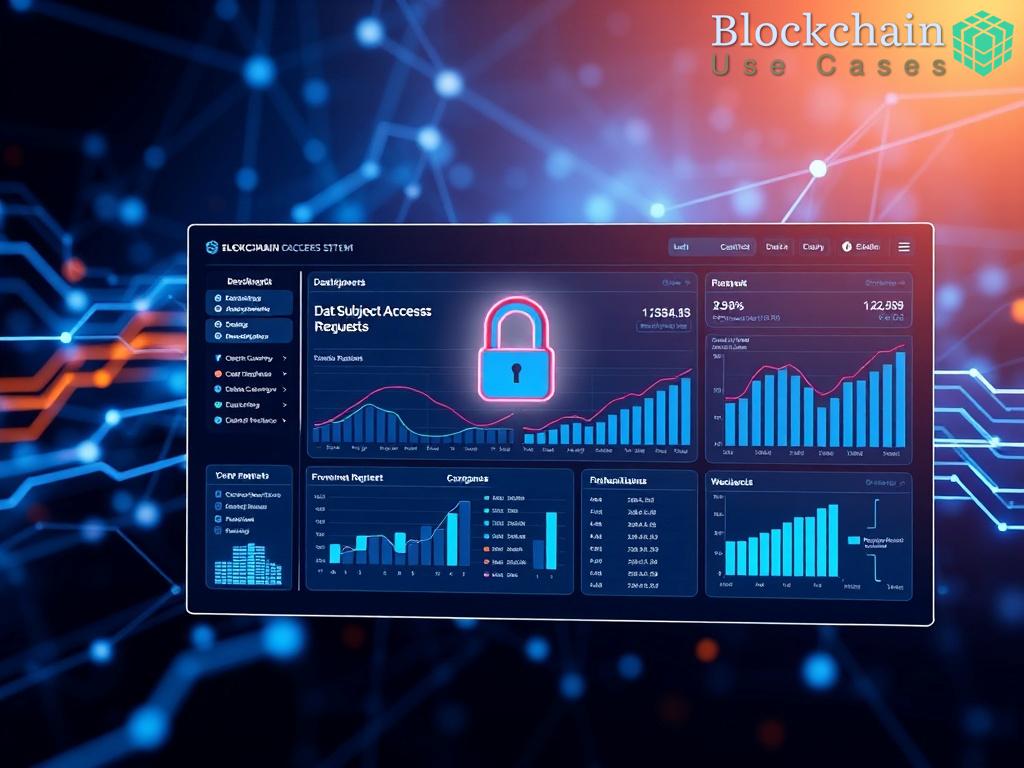Overview of Smart Contracts in IoT Device Decommissioning
The Evolution of IoT Device Management
The Internet of Things (IoT) has revolutionized industries by enabling seamless connectivity between devices. However, as the number of connected devices continues to grow, so does the need for efficient management practices, especially concerning the decommissioning of these devices. The traditional methods for decommissioning and data wiping are often cumbersome and prone to human error. Enter smart contracts—self-executing contracts with the terms of the agreement directly written into code. These contracts can automate the decommissioning process, ensuring that it is executed flawlessly and securely.
How Smart Contracts Enhance Decommissioning Processes
Smart contracts leverage blockchain technology to provide transparency, security, and automation. When an IoT device reaches the end of its life cycle, a smart contract can automatically initiate the decommissioning process, which includes data wiping and secure disposal. This automation reduces the risks associated with manual handling and ensures compliance with data protection regulations.
Below is a comparison of traditional decommissioning methods versus smart contract-based solutions:
| Criteria | Traditional Methods | Smart Contract-Based Methods |
|---|---|---|
| Efficiency | Manual processes are time-consuming | Automated execution saves time |
| Security | Prone to human error | Immutable records enhance security |
| Compliance | Challenging to ensure adherence | Built-in compliance tracking |
| Cost | Higher operational costs | Reduces costs through automation |
The Future of Smart Contracts in IoT Ecosystems
The integration of smart contracts into the IoT device lifecycle management is not just a passing trend; it is a future-proof strategy that addresses the challenges posed by increasing device complexity and the imperative for data security. As organizations adopt these automated solutions, they can expect not only a reduction in operational costs but also enhanced trust among stakeholders. The potential for smart contracts to reshape IoT device decommissioning is immense, paving the way for a more secure and efficient digital landscape.
Data Wiping Protocols and Standards for IoT Devices
In the realm of IoT device management, ensuring data security during the decommissioning phase is paramount. As devices transition from operation to disposal, the data they house must be effectively wiped to prevent unauthorized access. This process is governed by various protocols and standards that dictate how data should be securely erased, ensuring compliance with legal frameworks and safeguarding sensitive information.
Understanding Data Wiping Standards
Data wiping is not merely about deleting files; it involves a rigorous process that adheres to established protocols designed to render data irretrievable. Various standards outline the best practices for data wiping, such as the NIST Special Publication 800-88, which provides guidelines for media sanitization. These standards are critical for IoT devices, as they often contain personal and proprietary data that can pose significant risks if improperly handled.
Key Protocols for Secure Data Wiping
To facilitate effective data wiping, several key protocols are utilized within the industry. These protocols ensure that data is not only deleted but also rendered unrecoverable. Below is a list of commonly adopted data wiping protocols:
- NIST SP 800-88: A widely recognized standard that outlines methods for media sanitization, emphasizing the importance of thorough data destruction.
- DoD 5220.22-M: A procedure developed by the U.S. Department of Defense that involves multiple overwrite passes to ensure data is irrecoverable.
- ISO/IEC 27040: This standard provides guidelines for data protection and security, including recommendations for effective data destruction methods.
- BSI Guidelines: The German Federal Office for Information Security offers guidelines that detail best practices for data wiping and sanitization.
Utilizing these established protocols ensures that organizations not only comply with relevant legal requirements but also uphold their commitment to data privacy and security. As smart contracts automate the decommissioning process, integrating these protocols into the smart contract logic further enhances the security of data wiping practices, ensuring that every step is executed in accordance with established standards.
The Role of Smart Contracts in Compliance
Smart contracts can be programmed to automatically trigger specific data wiping protocols based on the device type and the data it contains. By embedding compliance checks within the smart contract, organizations can ensure adherence to data protection regulations and minimize the risk of human error. This automated approach not only streamlines the decommissioning process but also fosters greater trust among stakeholders, reinforcing the importance of data security in the evolving landscape of IoT device management.
Implementing Automation in Device Lifecycle Management
The rapid expansion of IoT devices necessitates a reevaluation of how organizations manage their lifecycle, particularly in the context of decommissioning. The integration of smart contracts into device lifecycle management is paving the way for a more streamlined and secure process. By leveraging automation, businesses can not only enhance operational efficiency but also ensure compliance with stringent data protection regulations. This approach significantly reduces the risks associated with manual interventions, allowing for a more reliable and effective decommissioning procedure.
When considering the implementation of automation in device lifecycle management, it’s crucial to understand the multifaceted benefits that smart contracts offer. These self-executing contracts serve as the backbone for automating key processes, ensuring that every step—from data wiping to disposal—aligns with established protocols. By embedding specific instructions within the smart contracts, organizations can create a seamless workflow that mitigates potential errors and enhances accountability. This integration marks a significant shift from traditional practices, where human oversight often introduced vulnerabilities and inefficiencies.
Streamlining Decommissioning Processes with Smart Contracts
One of the most compelling aspects of utilizing smart contracts in IoT device decommissioning is the inherent ability to streamline processes. For instance, upon reaching the end of its operational life, a device can automatically trigger a smart contract that initiates a series of actions. This includes verifying the device’s identity, executing the necessary data wiping protocols, and coordinating with certified disposal services. Such automation not only accelerates the decommissioning timeline but also ensures that each action is performed in accordance with compliance standards, thereby safeguarding sensitive data from potential breaches.
Moreover, the transparency provided by blockchain technology enhances trust among stakeholders. Each step taken within the smart contract is recorded on an immutable ledger, providing an auditable trail that can be referenced for compliance verification. This is particularly important in industries where regulatory requirements are stringent, as it allows organizations to demonstrate their commitment to data security and responsible device management.
Fostering Compliance and Trust Through Automation
As organizations embrace smart contracts for automated decommissioning, they also unlock the potential for improved compliance management. By incorporating data protection standards directly into the smart contract, organizations can ensure that all necessary protocols are followed without the risk of oversight. This proactive approach not only fosters a culture of accountability but also significantly diminishes the likelihood of data breaches, which can have devastating consequences for both businesses and their customers.
Furthermore, the implementation of automation in device lifecycle management cultivates a greater sense of trust among stakeholders. Clients, regulators, and partners are increasingly aware of the importance of data security, and automating compliance measures demonstrates an organization’s dedication to upholding these standards. This not only strengthens relationships but also positions the organization as a leader in responsible IoT device management.
Security Implications of Smart Contracts in Decommissioning
As organizations increasingly turn to smart contracts for the decommissioning and data wiping of IoT devices, it is crucial to consider the security implications involved in this transformation. While these automated solutions promise efficiency and compliance, they also introduce new challenges and risks that must be meticulously addressed. Understanding the security landscape surrounding smart contracts is essential for ensuring that the benefits outweigh potential vulnerabilities in the decommissioning process.
One of the primary security implications of utilizing smart contracts in IoT device decommissioning lies in the code integrity. The effectiveness of a smart contract hinges on the accuracy and security of its programming. A single flaw in the code could lead to unintended actions, such as improperly executed data wiping or the failure to securely dispose of a device. This vulnerability is exacerbated by the fact that once deployed on the blockchain, smart contracts are immutable. Therefore, organizations must engage in rigorous code audits and testing before implementation to mitigate these risks and ensure that every potential exploit is addressed.
Building Trust Through Transparency
Another significant security aspect of smart contracts is the inherent transparency provided by blockchain technology. Each action performed within the smart contract is recorded on an immutable ledger, creating a comprehensive audit trail. This transparency fosters trust among stakeholders, as it allows for real-time verifications of compliance with data protection regulations. However, it also necessitates a careful consideration of what information is recorded. Sensitive data should never be included in the contract, as this could expose organizations to breaches. Thus, while the transparency of smart contracts enhances security, it also raises the stakes regarding the information shared within them.
Mitigating Risks Through Comprehensive Protocols
To further bolster security during the decommissioning process, organizations must integrate comprehensive data wiping protocols into their smart contracts. The automation of these protocols not only ensures adherence to industry standards but also minimizes the risk of human error. By embedding protocols such as NIST SP 800-88 and DoD 5220.22-M directly into the smart contract logic, organizations can create a robust framework that guarantees proper data sanitization before disposal. This proactive approach significantly reduces the likelihood of sensitive data falling into the wrong hands, ultimately strengthening the overall security posture of the organization.
In conclusion, while smart contracts offer a promising solution for the automated decommissioning of IoT devices, organizations must remain vigilant about the associated security implications. By focusing on code integrity, transparency, and the rigorous implementation of data wiping protocols, businesses can harness the full potential of smart contracts while safeguarding against emerging threats.
Case Studies: Successful Applications of Automated Decommissioning
The integration of smart contracts in the decommissioning of IoT devices has shown remarkable promise, transforming traditional practices into efficient, automated processes. By examining real-world applications, we can gain insights into the effectiveness of these automated solutions and their ability to enhance data security, compliance, and operational efficiency.
One notable case study involves a leading telecommunications company that faced challenges in managing its vast array of IoT devices. With millions of devices deployed across various sectors, the manual decommissioning processes not only consumed significant resources but also heightened the risk of data breaches. By implementing smart contracts, the company automated the entire decommissioning lifecycle, from data wiping to secure disposal. The smart contracts were programmed to automatically trigger data sanitization protocols based on device type, ensuring compliance with industry standards. This shift not only reduced decommissioning time by over 50% but also enhanced the company’s ability to demonstrate regulatory compliance, fostering greater trust among stakeholders.
Another compelling example can be found in the healthcare sector, where a hospital network faced stringent regulations regarding patient data privacy. The hospital utilized smart contracts to manage the decommissioning of obsolete medical devices, which often contained sensitive patient information. By automating the data wiping processes through smart contracts, the hospital ensured that all devices were sanitized according to established protocols before disposal. This automation not only streamlined operations but also minimized the risk of human error that could lead to potential data leaks. The successful implementation of smart contracts in this context significantly bolstered the hospital’s data security measures, allowing it to maintain compliance while focusing on patient care.
In the manufacturing industry, a global leader in smart devices adopted smart contracts to enhance its product lifecycle management. The company faced challenges with the end-of-life management of its IoT devices, where improper disposal could result in environmental hazards and data exposure. By leveraging automated decommissioning through smart contracts, the company developed a robust framework that integrated environmental compliance checks alongside data sanitization protocols. This innovative approach not only ensured that devices were disposed of responsibly but also provided an auditable trail of actions taken during the decommissioning process. As a result, the organization significantly improved its sustainability initiatives while safeguarding sensitive information.


















